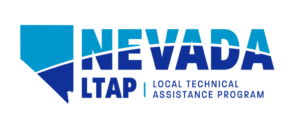This course is scheduled as below (8:00–10:00am PT each day):
- Module 1: March 17, 2026
- Module 2: March 24, 2026
- Module 3: March 31, 2026
(You must attend all 3 sessions for certification)
The course fee is $20.
Course Description:
Transportation Asset Management (TAM) is a data-driven approach that helps agencies get the most bang for their buck, by picking projects and treatments that keep roads in the best possible condition for as long as possible.
While TAM is a great fit for federal and state transportation agencies, developing a TAM program is a big effort for many local agencies. Managing Local Roads Effectively offers a simple overview of TAM’s components and illustrates how little changes can have a big impact on an agency.
Ultimately, the training outlines how agencies can:
- Take initial steps towards implementing TAM,
- Get more out of available funding, and
- Better communicate with elected officials and residents.

The training also introduces example road and street management processes and tools that benefit other local agencies.
Highway Maintenance Degree Credit:
This course is counts for 1 credit hour for Front Range Community College’s Highway Maintenance Degree. If you are enrolled in the FRCC’s degree program and would like to attend for credit, let us know.
Instructors:
Mark Woods is a Senior Engineer at Applied Pavement Technology, Inc. with two decades of pavement experience. As a transportation agency executive, he has a proven track record of solving organizational management issues and participating in the national dialogue for the advancement of transportation operations and cost-effective pavement preservation. During his previous employment as the State Pavement Engineer for the Tennessee Department of Transportation (TDOT), he oversaw the statewide pavement network by monitoring and predicting conditions, setting performance targets, and overseeing the selection of pavement resurfacing projects and the determination of pavement preservation and pavement rehabilitation treatments. Previous to that, he served as the State Asphalt Materials Engineer where he led pavement testing projects and managed the statewide asphalt paving program, with a focus on asphalt materials specifications.


Brad Allen is a Senior Engineer at Applied Pavement Technology, Inc. (APTech), and a certified NHI instructor, with over 30 years of experience in the areas of transportation asset management, capital program management, materials engineering, pavement management, and highway maintenance management. He has supported the development of transportation asset management plans (TAMPs) for fifteen states. Under contracts with Federal Highway Administration (FHWA), Mr. Allen led development national guidance and facilitated workshops to state DOTs on life-cycle planning, risk management, and financial planning to develop a TAMP. He recently served as Principal Investigator for NCHRP 23-08 A Guide for Incorporating Maintenance Costs into a TAMP and NCHRP 08-136 Performance-Based Management Approaches for Maintenance.
During his previous employment, Mr. Allen served several roles for the New York State DOT including Statewide Drainage Maintenance Engineer, Maintenance Budget Coordinator, System Administrator for the agency’s maintenance management system. His final role with NYSDOT was as Director of the Program Management Bureau, where he managed the use of federal and state funding for all capital project lettings and change orders.
Intended Audience:
The training is appropriate for local agencies of any size, including small agencies with only a few paved roads to larger agencies with a more complex asset network.
Agenda:
Module 1: Introduction to TAM
The first module describes the principles and components of a TAM program. The module includes a discussion of the challenges local transportation agencies face and the solutions a TAM program provides, per component. Examples of local transportation agencies are included to highlight the real benefits derived from implementing TAM.
The material also introduces tools to communicate funding needs and the strategies an agency is using to care for its road and street network. Nevada DOT’s Transportation Asset Management Plan (TAMP) is one example, which explains how TAM strategies are developed and how they are being applied. Other examples from local agencies illustrate how a TAMP can benefit a smaller agency.
Module 2: Tools That Advance Asset Management
The second module discusses data collection, the importance of data quality, management system software, and presenting data effectively. Using a simple road network as an example, the lesson demonstrates how to get the most bang for the buck from available funding. The material then introduces the types of data agencies have to drive decision-making and how it is used. The training includes simple and sophisticated data collection methods and analysis tools to emphasize that a TAM approach is customizable to the agency’s current business practices and resources.
Module 3: Maximizing Your Investment and Managing Risk
The third module explores additional steps that an agency can take to get the most out of its TAM program. This lesson introduces the concept of risk and how to use risk to prioritize where the agency spends its money. It also explains how agencies can apply the principles discussed in the training to bridges, drainage systems, and other road and street assets. The training closes with a discussion about how competing priorities (such as safety, social equity, and mobility) can be considered in a TAM program.
Registration:

Continue with the enrollment button below. If you do not receive an email regarding your reservation for a class spot after enrolling, please email ashannon@appliedpavement.com and mention the class and date for which you are trying to enroll.
If you are registering multiple people or know you need an invoice for payment in advance, contact Amelia with the names and email addresses to be registered/paid.
To ensure you receive timely email confirmations and reminders from this system, please add these emails to your safe sender list: wordpress@nvltaptraining.com, ashannon@appliedpavement.com, tsmith@appliedpavement.com, and jbirkey@appliedpavement.com. Learn how to add to safe sender in Outlook and Gmail.
Payment:
The non-refundable registration fee of $20 per person and is payable by check or credit card. Payment must be received prior to the first day of class. NOTE: If you need an invoice, please email your request to ashannon@appliedpavement.com.
If paying by credit card, please visit Pay Trace. All major credit cards are accepted. In the field labeled “Invoice #”, please type the course and the participant’s name(s), date, and location to help with processing.
Checks for individuals or groups should be sent with a copy of your registration reservation email to Applied Pavement Technology, Inc., Airport Plaza Office Building, 1755 E. Plumb Lane, Suite 264, Reno, Nevada 89502, Attn: Tracey Smith.
For questions, please email Amelia Shannon.

